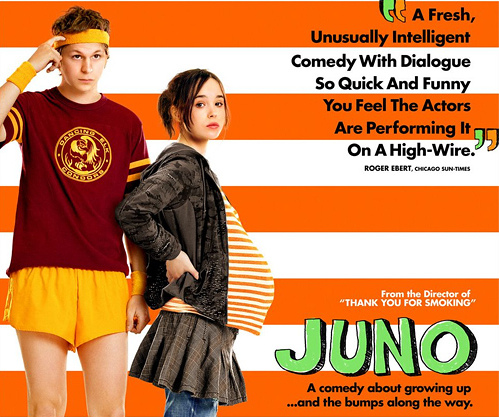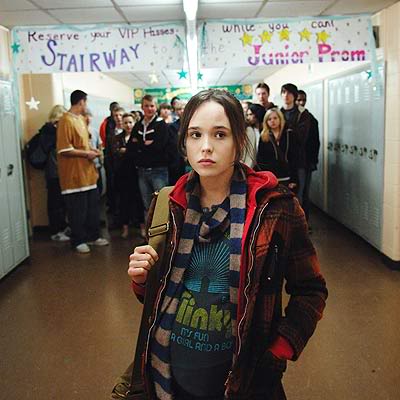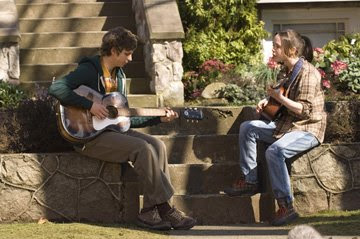
This is a guest post by Gretchen Sisson. She is working on Abortion Onscreen, which involves research of depictions of abortion in film and television.
Whenever you set out to say something about abortion, you’re going to be faced with criticism; whenever you attempt to say something serious about popular culture, the rigor of your intellectual pursuit will likely be challenged. Despite that, we’ve been generally pleased with the response to the study. People seem interested in discussing what stories they’ve seen, and which they find most compelling. I thought that – for this audience of cinephiles – I might respond in more detail to some of the comments and questions that keep cropping up.
So, there are more examples of abortion on television and movies than there used to be. That does not seem that interesting.
True, it’s not. There are more movies being made, more television shows, more channels for distribution – unless the increase is in prevalence (it’s not), this isn’t inherently noteworthy. However, we did our analysis to counter the recurring popular narrative that abortion is totally absent from media representations. Abortion stories are there, and they’ve always been there. Now that we know that, and we’ve identified them, we can begin delving into more detailed analyses of these stories.
Movies and television are always more dramatic than real life. So why is this interesting?
It’s true, lots of things are more dangerous on television and in movies. Cars and planes are more likely to crash; patients are more likely to slip into comas (and come out of them). There is more violence, more suspense, more drama overall – that’s what makes stories interesting.
However, it’s interesting that many medical procedures are less risky on television. CPR, for example, is consistently much more successful on television than in real life. Not only is it more effective at reviving people, it is also almost never shown to result in complications (such as broken ribs) that are fairly common in real life emergency situations. Yet, abortion is consistently shown to be more dangerous. (In this study, we specifically looked at the mortality rates of abortion on television; in future investigations we hope to look at other complications such as infertility and adverse mental health outcomes.)
It’s true that a dangerous abortion may be a more interesting story than a safe abortion. But why would a storyteller include an abortion, if their primary goal was to include medical complication? Why not have a character experience acute appendicitis? Or miscarriage with hemorrhage? Or any number of dramatic, possibly (but rarely) fatal conditions? The fact that abortion is often used in this way tells us something about why it’s included at all.
Furthermore, many of the deaths associated with abortion were not caused by the abortion itself. As you can see, many of the characters who got an abortion (or just considered getting one) later died as a result of accident or violence. This sort of karmic linking between characters associated with abortion and dramatic deaths is telling; it seems that abortion is used not as a way of creating drama in and of itself, but as a way of condemning characters.
Realistic abortion stories would be boring. Why would media makers want to include them?
This is the Chekhov’s gun principle. Why include an abortion if it’s not dramatic? But realistic abortion can be dramatic. It can involve drama if the character is conflicted and agonizing over her decision. It can involve drama even if she knows immediately that she wants an abortion, but must find a way to pay for it, or face protestors on her way to the clinic, or consider what the unplanned pregnancy means for the future of her relationships. Many movies and television shows have shown realistic abortions in compelling dramatic ways: Friday Night Lights, Parenthood, Fast Times at Ridgemont High, to name just a few. I don’t accept the premise that realistic abortions are inherently uninteresting. Furthermore, it seems that common, stigmatized experiences would provide ample opportunities for creative storytellers to say something new, interesting, dramatic – maybe even profound – without resorting to a bloody ending.
When, historically, are these abortion stories set? Shouldn’t some abortions be portrayed as dangerous?
This observation is exactly why we chose not to comment on the motivations of screenwriters and producers. For example, in Vera Drake, Revolutionary Road, and Dirty Dancing, illegal abortion is portrayed as dangerous. This could be a very progressive commentary on the importance of legal access to abortion. Conversely, the legal abortion story in Ides of March – which ends with the young woman committing suicide when she believes her abortion is going to be disclosed on the national stage – is, at its core, a message of stigma.
Furthermore, because our sample began in 1916 (when abortion was dangerous) and included the decades filmmakers had to follow the Hays Code (which said abortion stories could not have happy endings), we recognize that there are innumerable reasons and motivations for abortion to be portrayed as dangerous.
Ultimately, though, the aggregate linking of abortion and risk creates an ongoing social myth about abortion as dangerous. We do not live in a world where people talk openly about their abortion experiences. We’ve all driven in cars, so when we see crashes or chases in movies, we can integrate that into our overall idea of what “driving” is, and the fictional narrative, while entertaining, plays a relatively small part in shaping that idea. However, we don’t all have abortion, or talk to people we know about their abortions (or even know that we know people who’ve had abortions), which makes the stories we see in the media all the more important cultural understanding of what abortion is.
What’s next?
We really want to use this study as a jumping off more for exploring more detailed questions about abortion stories in film and television: Who gets abortions? Why? What does abortion care actually look like in popular culture? You’re welcome to check out abortiononscreen.org to see more about where we hope to go in the future.
Recommended Reading: “Films and TV Portray Abortion As More Dangerous Than It Is” at Bitch Media





